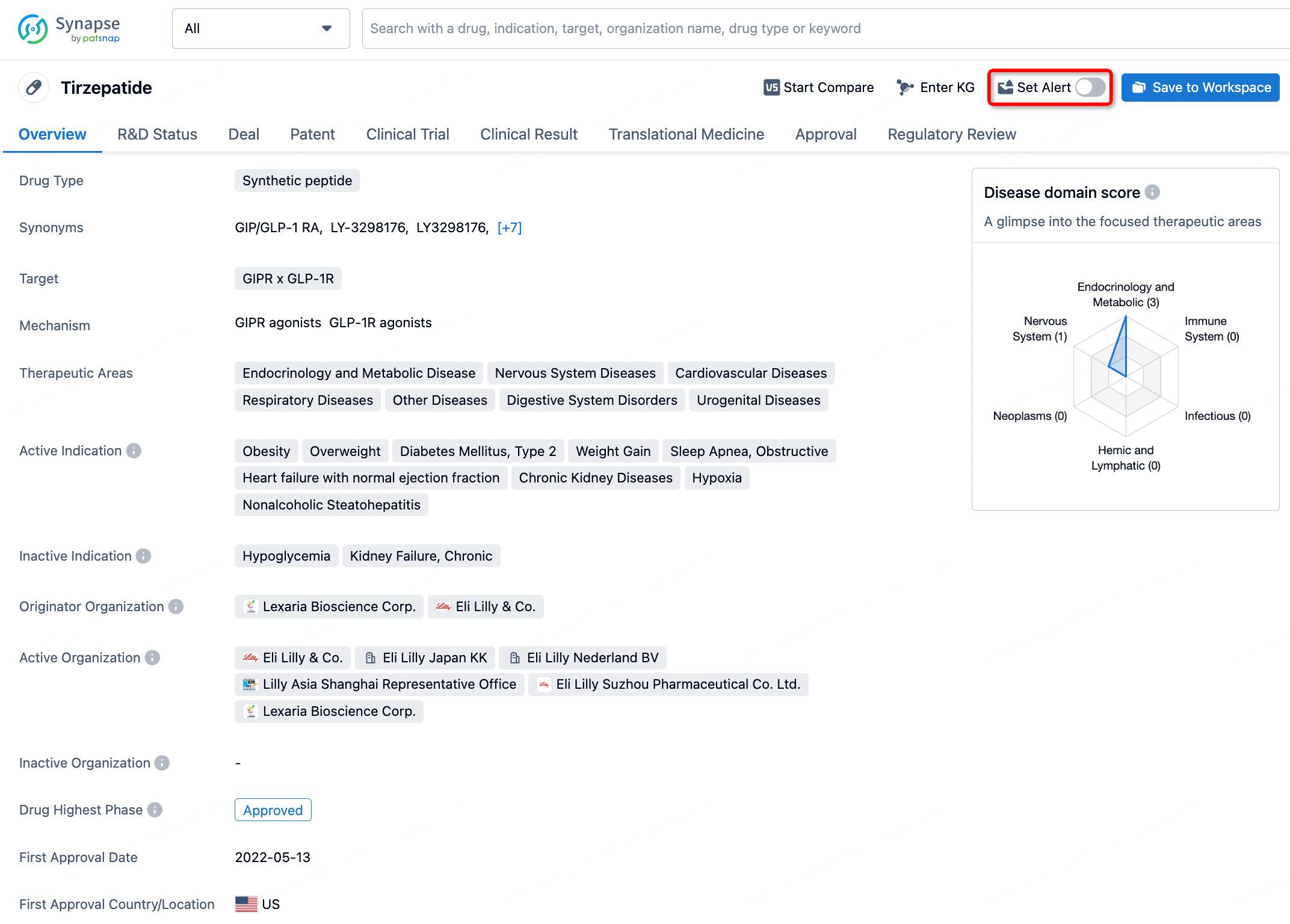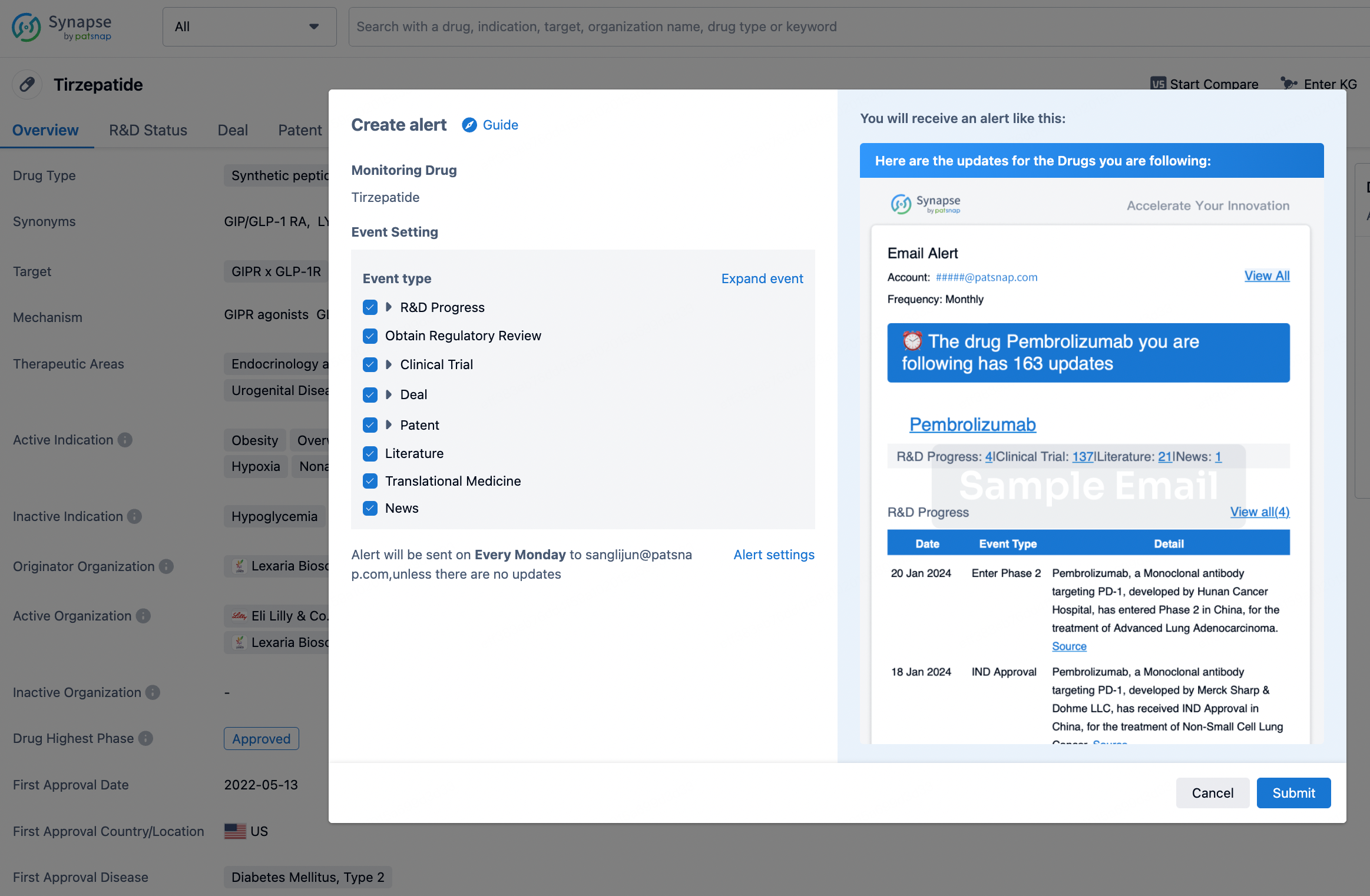Request Demo
What is the mechanism of Entecavir Maleate?
17 July 2024
Entecavir maleate is a potent antiviral medication primarily used for the treatment of chronic hepatitis B virus (HBV) infection. Understanding its mechanism of action provides insights into how it effectively curbs the replication of HBV and helps manage this potentially life-threatening liver disease.
The active compound in entecavir maleate is entecavir, a guanosine nucleoside analogue. Once administered, entecavir is phosphorylated inside the host cells to its active triphosphate form, which competes with the natural substrate, deoxyguanosine triphosphate (dGTP), for incorporation into viral DNA. This competition predominantly occurs at the HBV polymerase enzyme, crucial for the viral replication cycle.
The HBV replication process involves several steps: the virus enters the host liver cell, its DNA is transported to the nucleus, and there it is converted to covalently closed circular DNA (cccDNA). This cccDNA serves as a template for the transcription of viral RNA, which is then reverse transcribed back into DNA by the viral reverse transcriptase, a function of the HBV polymerase. Entecavir triphosphate intervenes in this critical reverse transcription step.
By mimicking the natural nucleoside, entecavir triphosphate gets incorporated into the growing viral DNA chain by HBV polymerase. This causes premature chain termination due to the lack of a 3'-OH group, which is essential for the addition of subsequent nucleotides. Consequently, the synthesis of new viral DNA is halted, effectively blocking the replication of HBV.
Entecavir exhibits a high degree of specificity for HBV polymerase over human polymerases, which contributes to its efficacy and relatively favorable safety profile. Furthermore, entecavir has a potent antiviral activity, even against HBV strains that are resistant to other nucleoside analogues.
One of the key advantages of entecavir maleate is its low potential for resistance development. Unlike some other antiviral agents, entecavir maintains its effectiveness over prolonged treatment periods, making it a cornerstone in the long-term management of chronic hepatitis B.
In summary, the mechanism of entecavir maleate involves its conversion to an active triphosphate form that competitively inhibits HBV polymerase, leading to premature termination of viral DNA synthesis. This mechanism effectively interrupts the replication cycle of HBV, thereby reducing viral load and limiting liver damage in patients with chronic hepatitis B. Through its targeted action and high barrier to resistance, entecavir maleate stands as a critical therapeutic agent in the fight against HBV infection.
The active compound in entecavir maleate is entecavir, a guanosine nucleoside analogue. Once administered, entecavir is phosphorylated inside the host cells to its active triphosphate form, which competes with the natural substrate, deoxyguanosine triphosphate (dGTP), for incorporation into viral DNA. This competition predominantly occurs at the HBV polymerase enzyme, crucial for the viral replication cycle.
The HBV replication process involves several steps: the virus enters the host liver cell, its DNA is transported to the nucleus, and there it is converted to covalently closed circular DNA (cccDNA). This cccDNA serves as a template for the transcription of viral RNA, which is then reverse transcribed back into DNA by the viral reverse transcriptase, a function of the HBV polymerase. Entecavir triphosphate intervenes in this critical reverse transcription step.
By mimicking the natural nucleoside, entecavir triphosphate gets incorporated into the growing viral DNA chain by HBV polymerase. This causes premature chain termination due to the lack of a 3'-OH group, which is essential for the addition of subsequent nucleotides. Consequently, the synthesis of new viral DNA is halted, effectively blocking the replication of HBV.
Entecavir exhibits a high degree of specificity for HBV polymerase over human polymerases, which contributes to its efficacy and relatively favorable safety profile. Furthermore, entecavir has a potent antiviral activity, even against HBV strains that are resistant to other nucleoside analogues.
One of the key advantages of entecavir maleate is its low potential for resistance development. Unlike some other antiviral agents, entecavir maintains its effectiveness over prolonged treatment periods, making it a cornerstone in the long-term management of chronic hepatitis B.
In summary, the mechanism of entecavir maleate involves its conversion to an active triphosphate form that competitively inhibits HBV polymerase, leading to premature termination of viral DNA synthesis. This mechanism effectively interrupts the replication cycle of HBV, thereby reducing viral load and limiting liver damage in patients with chronic hepatitis B. Through its targeted action and high barrier to resistance, entecavir maleate stands as a critical therapeutic agent in the fight against HBV infection.
How to obtain the latest development progress of all drugs?
In the Synapse database, you can stay updated on the latest research and development advances of all drugs. This service is accessible anytime and anywhere, with updates available daily or weekly. Use the "Set Alert" function to stay informed. Click on the image below to embark on a brand new journey of drug discovery!
AI Agents Built for Biopharma Breakthroughs
Accelerate discovery. Empower decisions. Transform outcomes.
Get started for free today!
Accelerate Strategic R&D decision making with Synapse, PatSnap’s AI-powered Connected Innovation Intelligence Platform Built for Life Sciences Professionals.
Start your data trial now!
Synapse data is also accessible to external entities via APIs or data packages. Empower better decisions with the latest in pharmaceutical intelligence.


